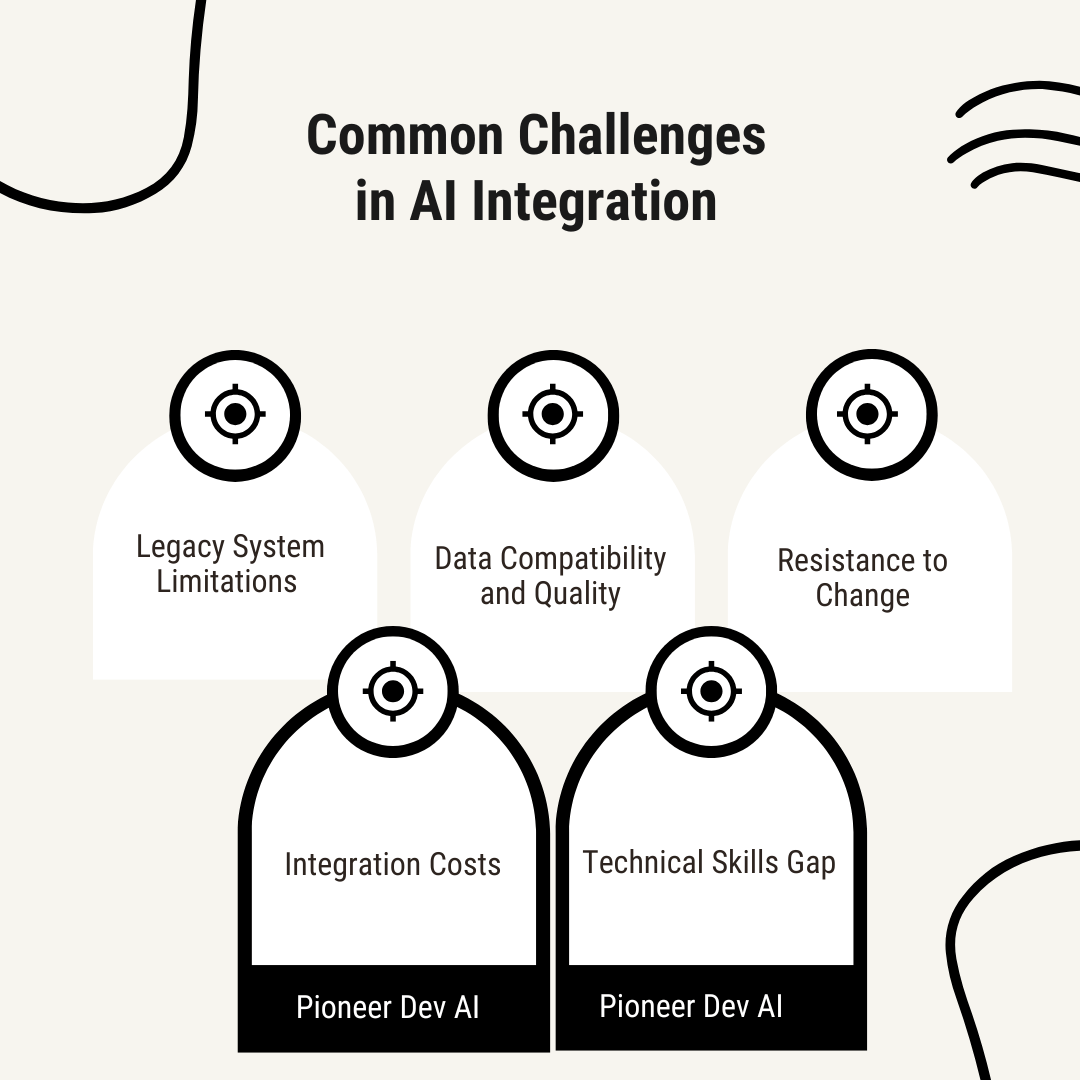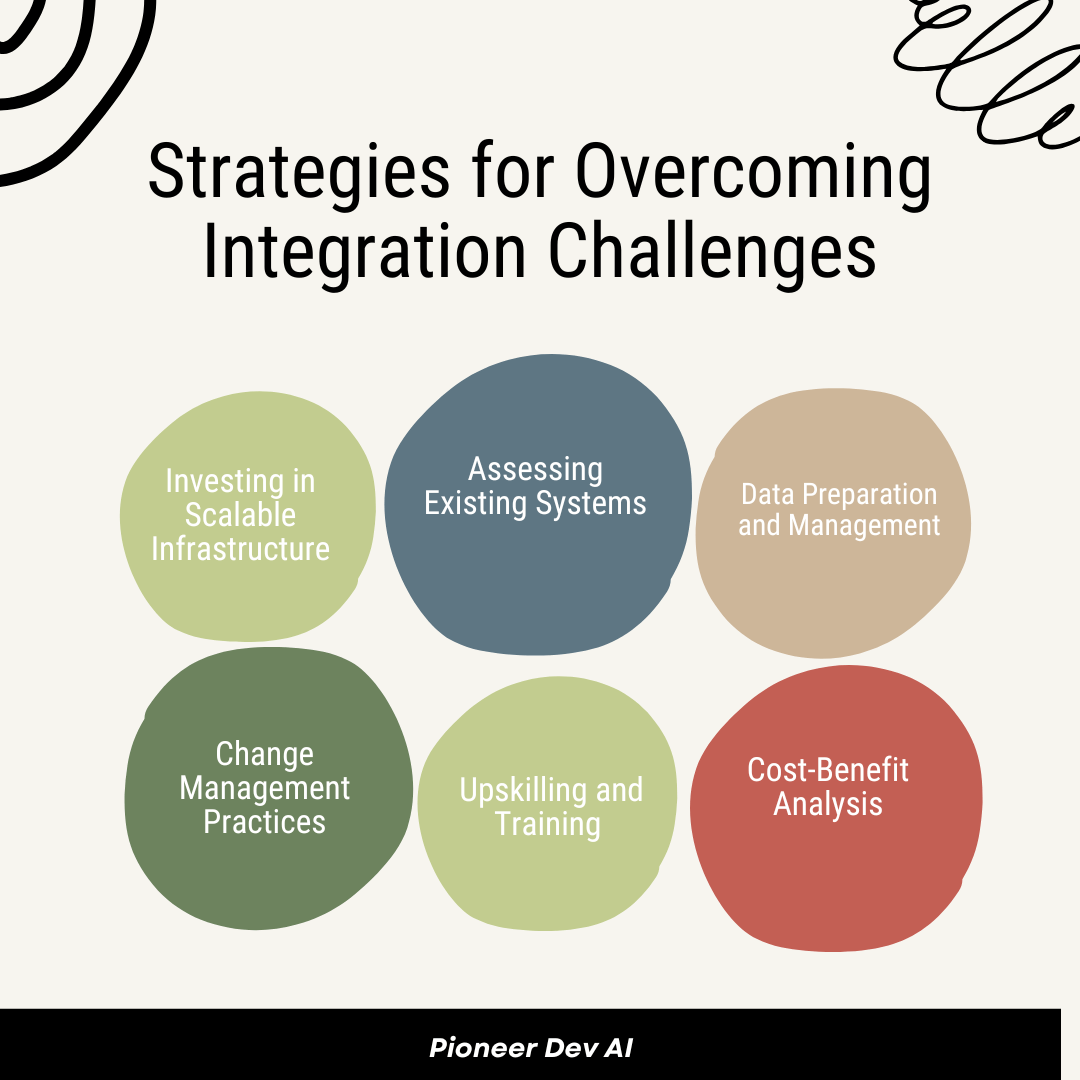AI Integration Made Easy: Overcoming Challenges With Existing Systems
AI integration has emerged as a crucial driver of innovation and efficiency. By incorporating artificial intelligence into existing systems, organizations can enhance decision-making, automate routine tasks, and unlock valuable insights from data.
However, the path to successful AI integration is often fraught with challenges, including compatibility issues with legacy systems, data silos, and employee resistance to change. These obstacles can hinder the transformative potential of AI, making it essential for businesses to navigate them effectively.
This article aims to provide practical solutions for overcoming these challenges, enabling organizations to harness the full benefits of AI integration. By addressing common pitfalls and offering actionable strategies, we hope to empower you to embark on your AI journeys with confidence and clarity.
Understanding AI Integration
Definition of AI Integration
AI integration refers to the process of incorporating artificial intelligence technologies into existing business systems and workflows. This can include the deployment of machine learning algorithms , natural language processing, robotic process automation, and other AI-driven solutions that enhance operational efficiency and decision-making.
Successful AI integration requires a comprehensive approach, ensuring that AI tools work harmoniously with legacy systems, databases, and organizational processes. This often involves not only technical adjustments but also strategic planning to align AI capabilities with business objectives.
Importance of AI Integration
The significance of effective AI integration cannot be overstated. This integration can lead to improved decision-making, as AI systems can analyze vast amounts of data faster and more accurately than human counterparts.
Furthermore, AI integration allows businesses to automate routine tasks, freeing up employee time for more strategic activities, and thereby enhancing overall efficiency.
Common Challenges in AI Integration

Legacy System Limitations
One of the most significant AI challenges you may face is the limitations posed by outdated legacy systems. These systems often lack the flexibility and capacity required to accommodate modern AI technologies.
As a result, you might find it difficult to implement AI solutions without first overhauling your existing infrastructure. This can lead to compatibility issues, increased downtime during transitions, and ultimately a slower return on investment.
Data Compatibility and Quality
Another critical hurdle in AI integration is ensuring data compatibility and quality. You may manage diverse data formats and sources, which can complicate the integration process.
Poor data quality—such as inaccuracies, missing values, or inconsistent formats—can adversely affect AI performance, leading to unreliable outcomes.
Resistance to Change
Organizational resistance is another prominent challenge you might encounter during the AI integration journey. Employees may harbor concerns about job displacement, fear of new technologies, or skepticism about the effectiveness of AI solutions.
Integration Costs
The financial implications of upgrading systems for AI integration cannot be overlooked. You’ll need to account for the costs associated with purchasing new technology, training employees, and possibly hiring external expertise.
Technical Skills Gap
Finally, the technical skills gap represents a significant challenge in AI integration that you should be aware of. Many organizations struggle to find qualified personnel who possess the necessary skills to manage AI technologies and integration processes. This gap can lead to delays in implementation and can hinder the overall success of your AI initiatives.
Strategies for Overcoming Integration Challenges

Assessing Existing Systems
To successfully integrate AI into your organization, the first step is to assess your existing systems. Start by evaluating your current technology stack to determine compatibility with AI tools. Look for gaps in performance, flexibility, and data management capabilities.
Consider conducting an audit of your software, hardware, and processes to identify areas that may need upgrading or replacement. This proactive approach will help you create a clear roadmap for integration and minimize potential disruptions.
Investing in Scalable Infrastructure
Investing in scalable infrastructure is crucial for meeting your AI needs. As your organization grows, your infrastructure must be able to adapt and expand accordingly.
Choose cloud-based solutions or platforms like AWS , Google Cloud , or Azure that allow for easy scaling without significant upfront costs. These scalable options enable you to adjust resources based on demand, ensuring your AI applications run smoothly and efficiently, regardless of fluctuations in workload.
Data Preparation and Management
Ensuring data quality and compatibility is a cornerstone of successful AI integration. Before deploying AI solutions, establish robust data preparation practices. Start by cleaning your data to eliminate inaccuracies, duplicates, and inconsistencies.
Implement a centralized data management system to standardize formats and improve accessibility. Additionally, consider investing in data governance frameworks to maintain ongoing data quality. By preparing your data effectively, you’ll enable your AI applications to deliver more reliable and actionable insights.
Change Management Practices
Addressing organizational resistance is essential for fostering a culture of innovation during AI integration. Start by communicating the benefits of AI to your employees, emphasizing how it can enhance their roles rather than replace them.
Encourage open dialogue and solicit feedback throughout the integration process to build trust and buy-in. Implement change management strategies that include regular updates, training sessions, and opportunities for employees to engage with new technologies.
Cost-Benefit Analysis
Conducting a cost-benefit analysis is vital for justifying your integration expenses. Start by outlining all potential costs associated with AI integration, including software, infrastructure upgrades, training, and ongoing maintenance.
Next, identify the expected benefits, such as improved efficiency, increased revenue, and enhanced customer satisfaction. By comparing costs with projected benefits, you can make informed decisions about your AI investments and secure the necessary buy-in from stakeholders.
Upskilling and Training
Finally, prioritize upskilling and training for your employees to build the technical expertise needed for successful AI integration. Offer training programs that cover essential AI concepts, tools, and practices, tailored to different roles within your organization.
Encourage employees to participate in workshops, webinars, or online courses to enhance their skills. By investing in your workforce, you’ll not only address the technical skills gap but also empower your team to maximize the value of your AI initiatives.
By implementing these strategies, you can effectively navigate the challenges of AI integration, creating a transition that ultimately drives innovation and growth in your organization.
Conclusion
By assessing your existing systems, investing in scalable infrastructure, ensuring data quality, and addressing resistance to change, you can pave the way for successful AI adoption.
Additionally, conducting a thorough cost-benefit analysis and prioritizing employee training will empower your team to maximize the potential of AI technologies.
As you navigate these integration challenges, consider partnering with experts who can support your journey. At Pioneer Dev AI , we specialize in providing tailored AI solutions designed to meet the unique needs of your business. Our team is dedicated to helping you achieve integration, enabling you to unlock the full potential of your AI initiatives. Ready to take the next step? Reach out to us today to explore how we can help transform your organization with effective AI strategies.

